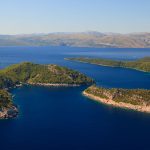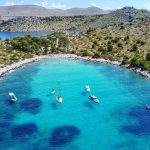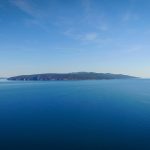Continuing our in-depth look at the great destinations in Croatian tourism on November 26, 2017, a closer look at the birthplace of TCN – Jelsa on the island of Hvar.
I will admit that it was love at first sight when I arrived in Jelsa in the middle of August, 2002. My plans back then were to buy a holiday home, move my meagre belongings from the UK and jet off to Tajikistan for a humanitarian consultancy. Fate intervened in various ways. There was a beautiful Dalmatian girl with gorgeous blue eyes, and not long after two mini-versions of the same, and Jelsa went from being a place to keep my books to a place I called home for 13 years and from where I wrote the first modern guide book about the island and started a website called Total Hvar.
It is a fabulous place, and a worthy addition to our series, 25 Things to Know about Croatia.
Hvar has a fascinating wine history dating back more than 2000 years and the arrival of the Ancient Greeks in 384 BC, and Jelsa has been at the very heart of that industry, its pretty harbour used as a transport centre for its quality wines around Europe. There used to be some 5700 hectares of vines under cultivation before the devastating phylloxera attack decimated the wine industry and led to mass emigration (an emigration which was enhanced by new taxes from the Austro-Hungarian Empire which disadvantages Dalmatian winemakers. More than decimated in fact, as today there are just 280 hectares under cultivation, a mere 5% of the glory days of the 19th century.
There may be less, but there is some outstanding quality in Jelsa these days…
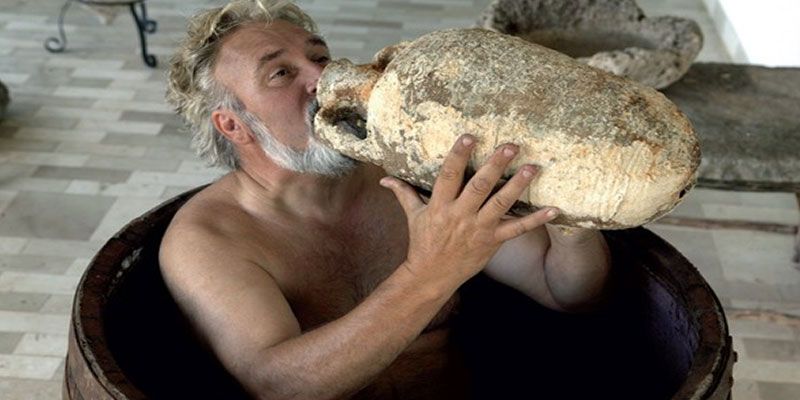
1. Wine Country: Andro Tomic
One of the most charismatic and best-known winemakers in all Croatia, Andro Tomic became one of the faces of Croatia joining the EU, and he was featured on global media such as BBC, AFP and The Daily Telegraph in his battle to protect the brand of Dalmatian dessert wine, Prosek, from EU bureaucrats wanting to ban the name, so that the Italian Prosecco sparkling wine lobby did not get upset. He even addressed the European Parliament on the difference, speaking in French, a language he picked up while learning the wine trade in France in his youth. The Tomic cellars are as charming as the man himself, and the Romanesque theme and delightful winery, accompanied by excellent wines (both indigenous Hvar grapes and international varieties) makes it the leading wine tasting experience on Hvar. Check out the Tomic video below.
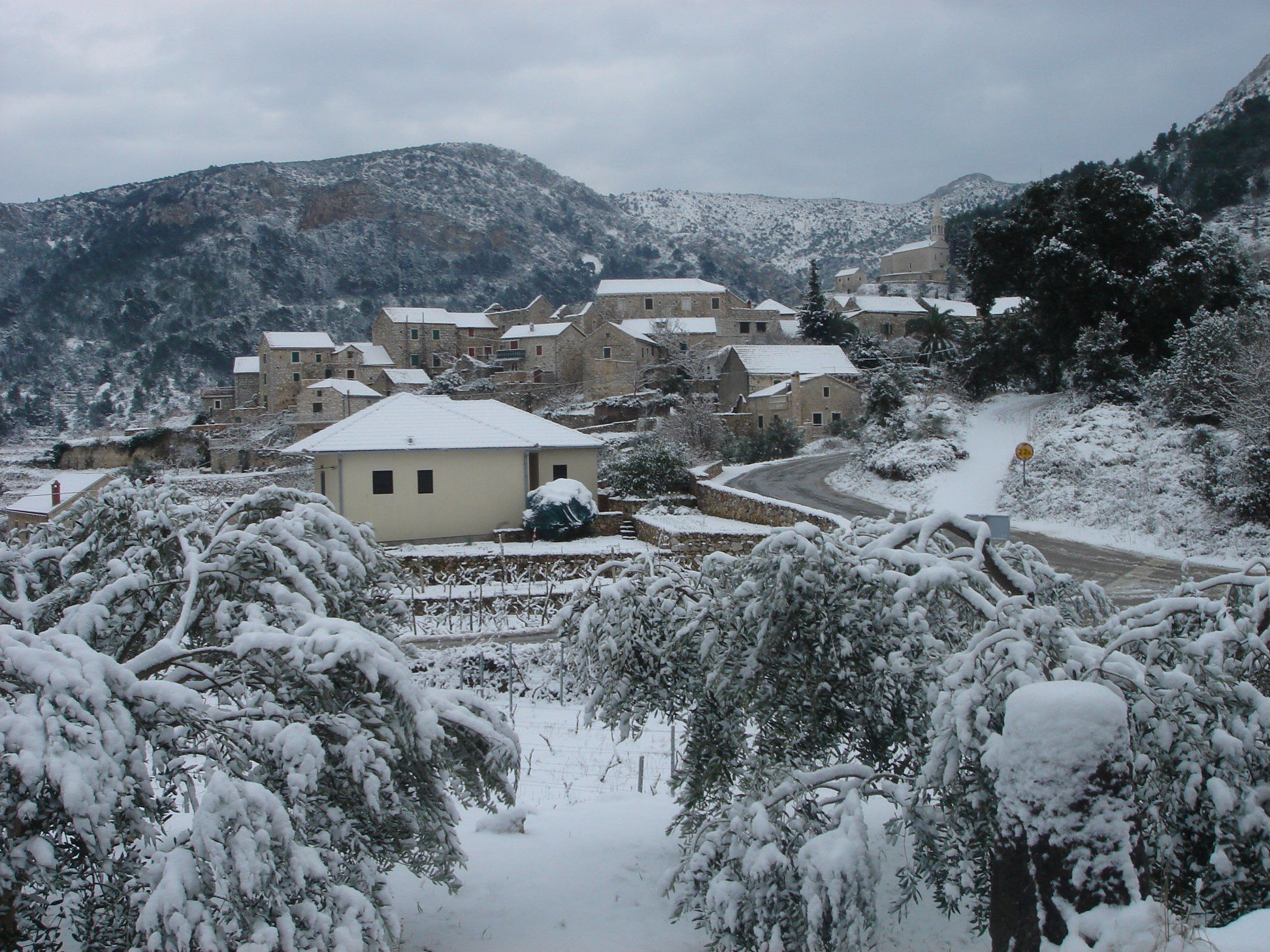
2. Wine Country: Ivo Dubokovic
A more intimate wine tasting experience can be found in the candlelit cellar of Ivo Dubokovic, regarded as one of the leading boutique winemakers in Croatia. An astonishing range of 11 wines comprise his annual output of about 25,000 litres, and the Dubokovic brand is sought after in the finest restaurants in Zagreb. The tasting experience, surrounded by his wine barrels, and accompanied with some excellent flavoured olive oils, is one of the best wine experiences I have had in Croatia.
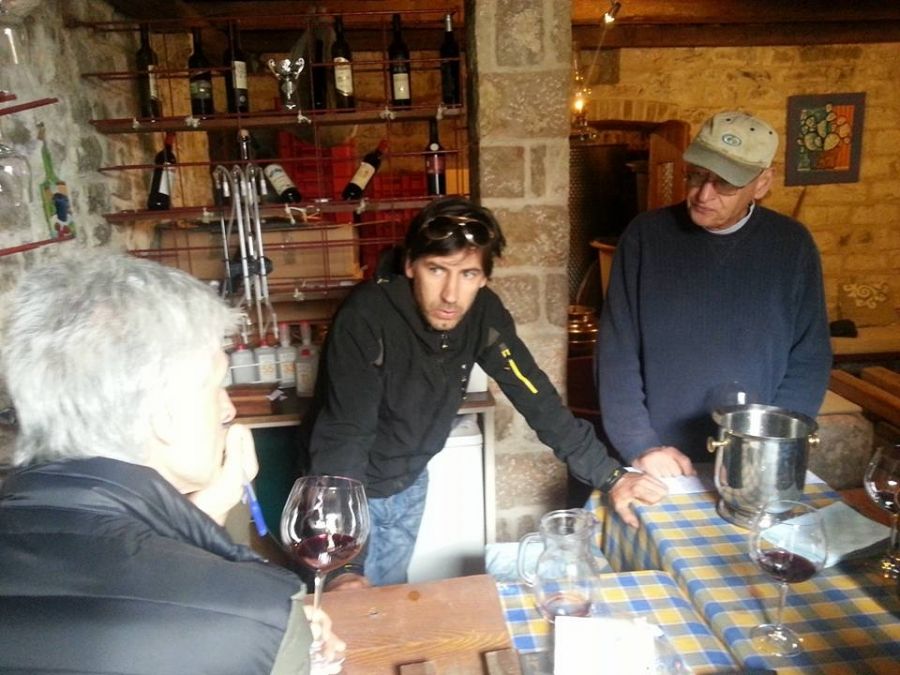
3. Wine Country: Teo Huljic
Less well-known, but also of excellent quality, are the wines of Teo Huljic, another small producer of about 6,000 litres a year. He produces some outstanding wines from indigenous varieties (including the only winemaker with 100% Mekuja variety), but is also experimenting with some international varieties, including Chardonnay and Merlot. He is also an outstanding chef and runs a delightful restaurant in the old town, with uneven stone tables and lemon trees above, which are groaning with fruit and often drop onto the dinner table. Now that is fresh! As for the food and wine, from sea urchin caviar to his signature three island burger (Hvar boar, Brac lamb, Pag cheese), this is how a food and wine tour with Hvar Tours looks like chez Huljic.
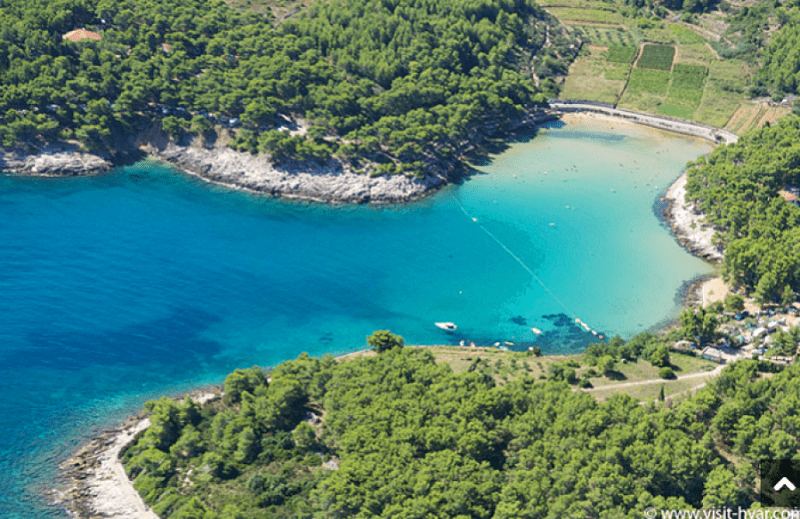
4. Beach Heaven
Jelsa has some of the best beaches on the island, including some with sandy bases, such as Mina (just below Hotel Hvar) and Grebisce (next bay along). Many locals prefer the rocky beaches on the other side of the bay in Vitarnja. There are great family beaches and also little coves, the choice is yours. A new town beach (nicknamed Copacabana) at the end of the old town waterfront has recently been added for those who do not want to walk too far.
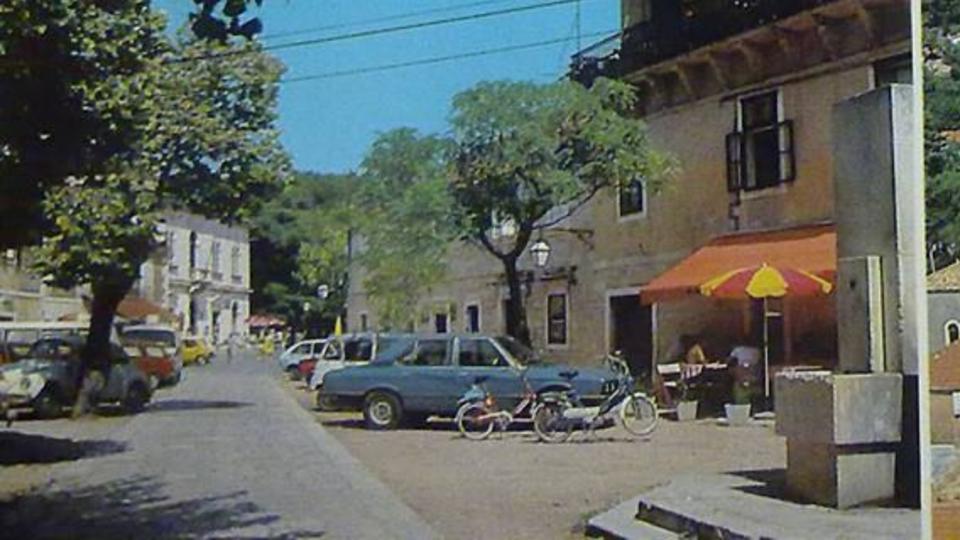
5. Pjaca, Hvar’s Most Relaxing Spot?
The main square in Jelsa is one of the most divine spots I have found in the 95 countries I have visited. And I will confess to spending more time on it than most over the last few years. This is how it looked in years gone by, above.
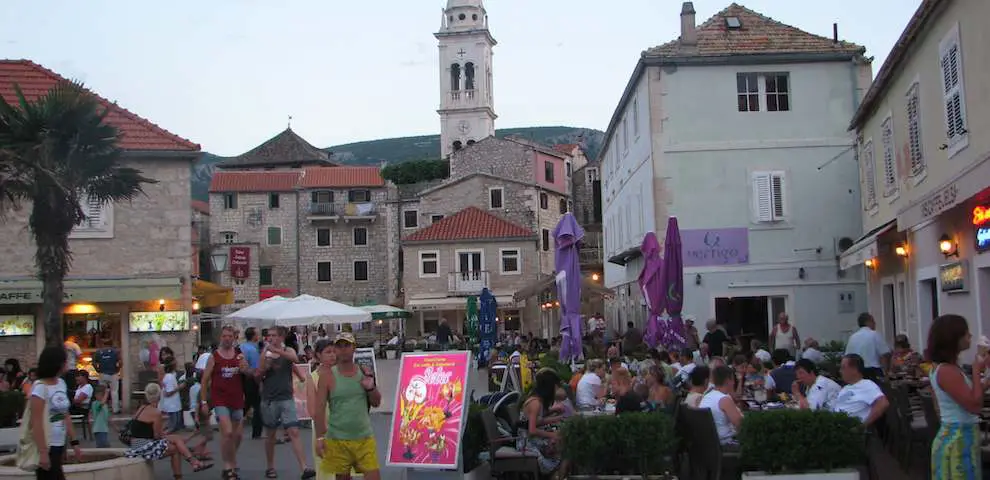
And a more modern view, taken from close to the sea.
https://www.youtube.com/watch?v=aoDMn-m2opU
As a place for children to play while parents relax and catch up with friends over a coffee, there is no finer place. The square does have one hidden danger to look out for, before parents relax too much, however. Underneath the tables on the cafes on the right is the only stream flowing into the sea on Hvar, Slatina, and there is a small part of it which is open so that local cafe owners can access the water. There are eels in the river, and young children are always drawn to it. Until your kids have actually fallen in, you are not a true local. I have become a proud local after two incidents over the years…
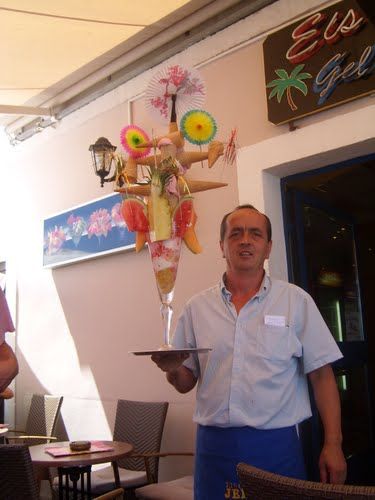
6. Ice Cream Heaven
It is claimed that Jelsa has the best ice cream in Dalmatia by some. It certainly has some of the most creative presentations. Jelsa’s ice cream tradition is more than 50 years old, following the arrival of three Macedonian Albanian brothers in 1962. They rented a space on the first floor in the square on the way to the main parking, and have gradually expanded, now owning three of the seven cafes on the main square. It certainly is ice cream heaven.
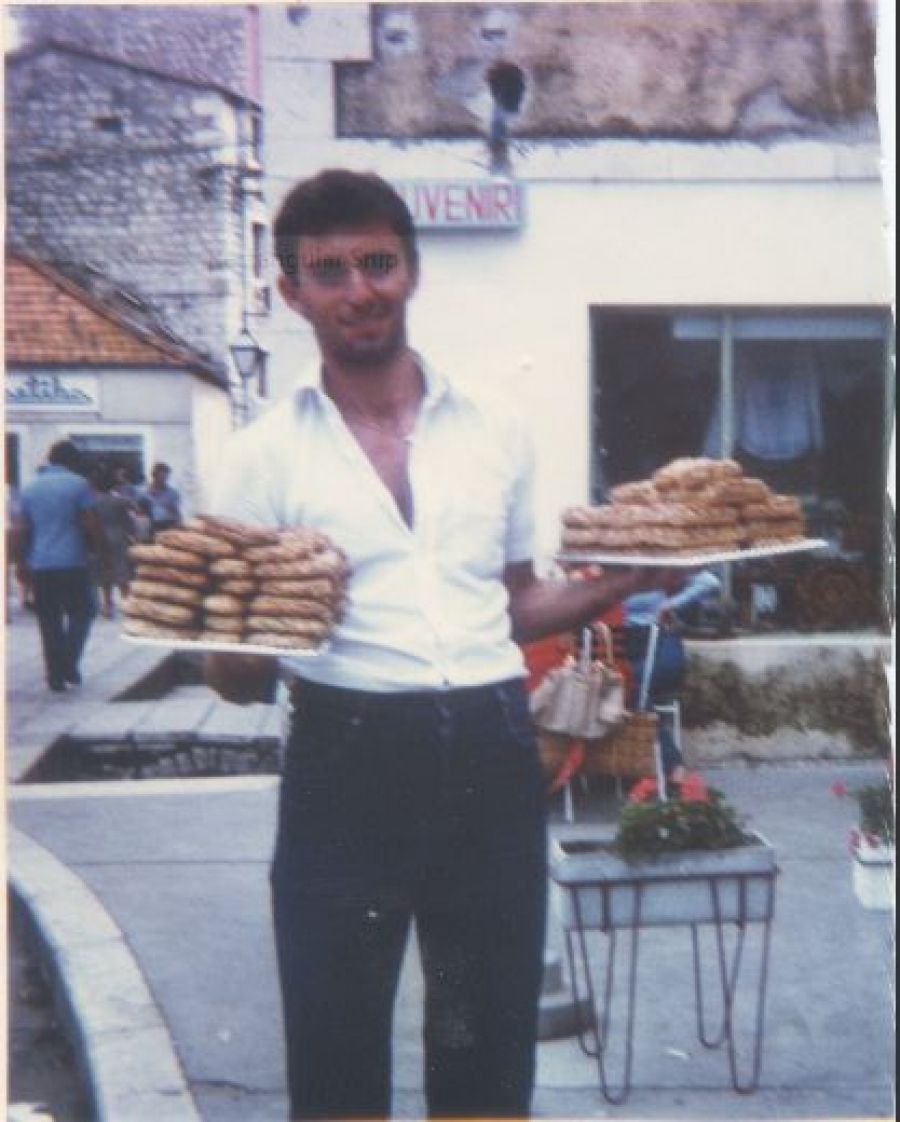
Back in the glory days of 1980s tourism, Cafe Splendid would sell 10,000 scoops a day in peak season, as well as up to 3,000 pastries. Here is Captain Nijaz back in 1978 supplying the other two cafes. Top tip if you are at Cafe Splendid – don’t miss the cherry strudel.
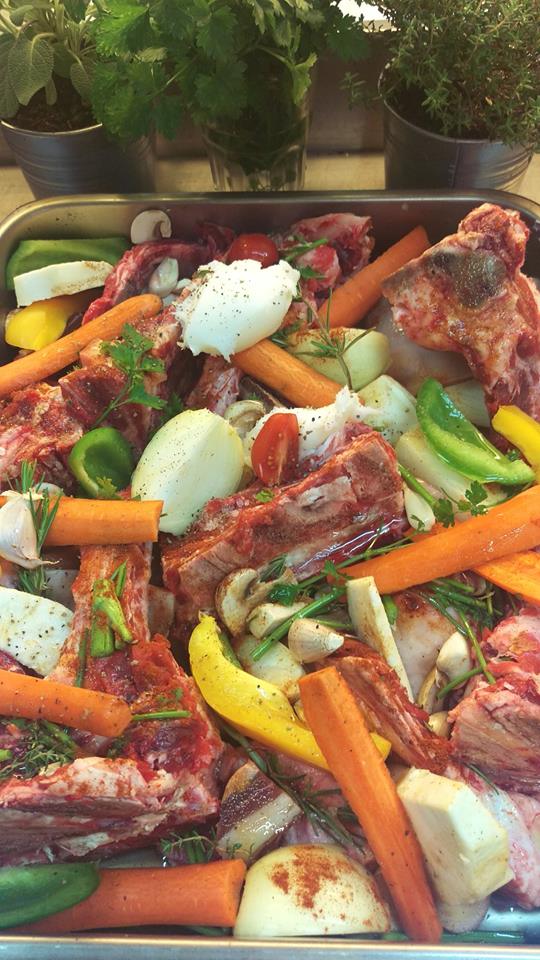
7. Vibrant Restaurant Scene – Dalmatia’s Finest Cuisine
Jelsa has some fine restaurants, more than 20 during the season, with the focus mostly, though not exclusively, on Dalmatian cuisine. Among ones not to miss, do check out Artichoke Wine Bar and Restaurant (photo above), who in addition to an innovative menu using 90% island products, also has the largest selection of Hvar wines on the island; Jelsa’s best-known and most romantic restaurant, Me and Mrs Jones, superbly located across the harbour on the water; Restaurant Faros in the old town for the best meat; and U Smokve for a wonderful organic selection in a very creative menu from a lovely young couple who have added much to the Jelsa scene since they opened a couple of years ago. Don’t forget the cocktail scene either. An old favourite is Villa Verde, with its spacious leafy courtyars, and Mojito on the waterfront next to Jones, whose extensive cocktail list includes the only cocktail made from 100% Hvar products – Il Forito.
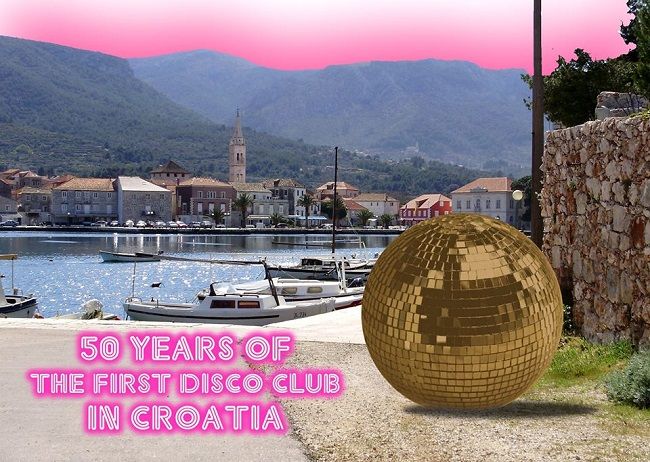
8. The First Disco in All Former Yugoslavia
It does make me laugh when people call Hvar Town the new Ibiza and one of the party capitals of the world, but Hvar, the island, did play a significant role in developing nightlife, with the opening of the first disco club in all former Yugoslavia, back in 1964. During the 1980s, the golden era of Jelsa tourism before the war in the region, Jelsa apparently had four nightclubs – the same number as Hvar Town, the ‘New Ibiza’, has today. A special 50th anniversary film was made in 2014 (report in Croatian below)
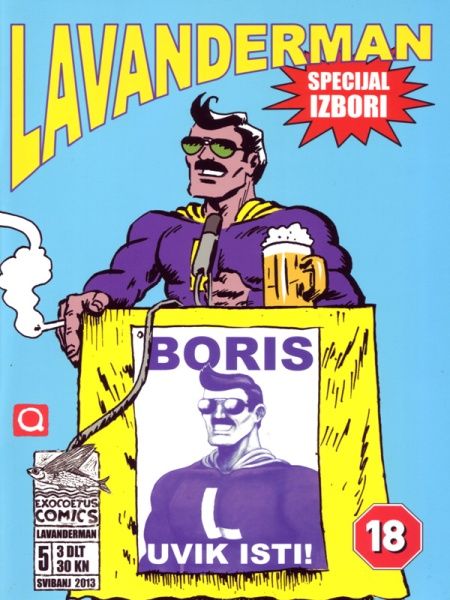
9. Jelsa’s Very Own Superhero: Meet Lavanderman!
Did you know that Jelsa has its very own superhero? Lavanderman was created when local Boris Buncuga fell asleep next to a lavender distillery after (I suspect) too much bevanda, and woke up in a lavender leotard, yellow cape and white Vespa by his side. His greatest power seems to be his success with women, although I am revising that opinion in light of recent events when I lost my laptop on the streets of Zagreb recently, and was contacted by a stranger who picked it up and tracked me down – we had just one mutual friend on Facebook – Lavanderman.
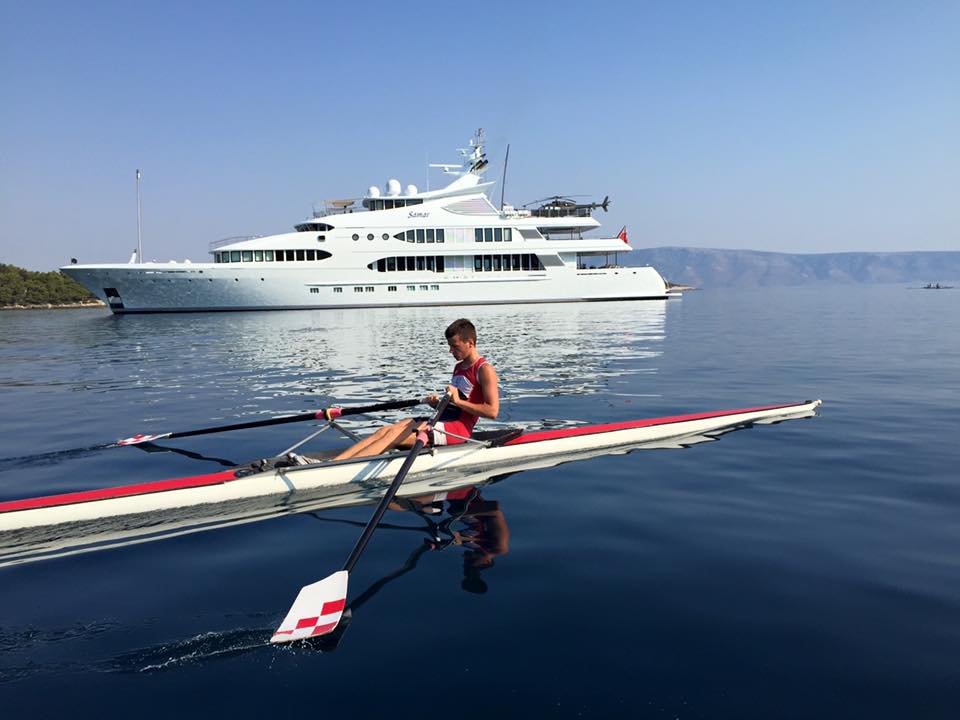
10. A Sporting Paradise – Hajduk, Balic and Rowing Success
Jelsa has a proud sporting tradition, and the construction of a new modern sports hall several years ago means that it has much to offer today. There is also a football pitch where Hajduk Split used to come from their winter training, and the Croatian futsal team took on Iran in a pre-tournament friendly in Jelsa a few years ago. Jelsa is most famous for its rowing club when it comes to sport, and the club is one of the best in the country, and a firm favourite with many local kids who start to row as early as four years old.
https://www.youtube.com/watch?v=tMES-sCKm6o
And they train hard. And early. One of my nicest memories of Jelsa – the early morning rowing practice out of season from the Total Hvar terrace (video above).
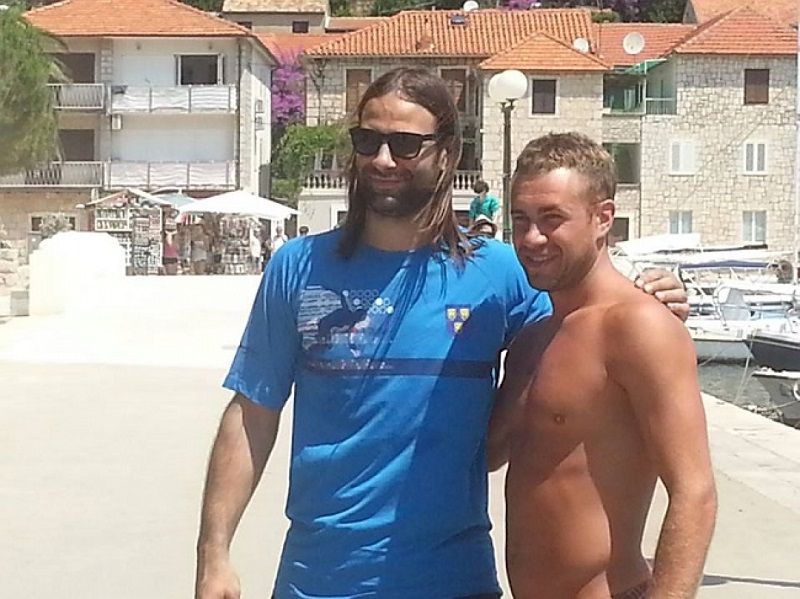
Jelsa is also the home of an annual handball training camp, which is run each year by Croatian legend, Ivano Balic.
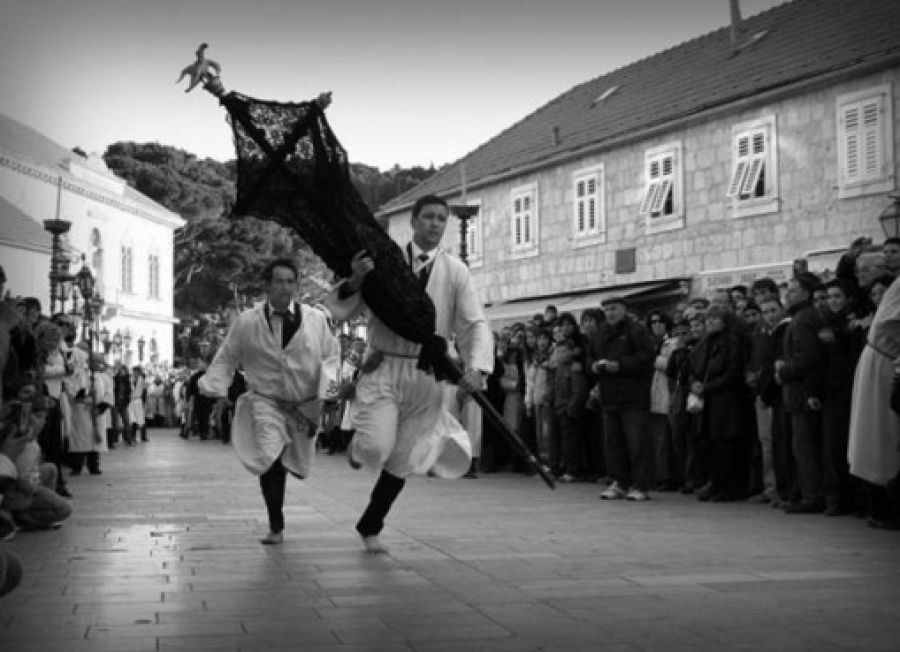
11. UNESCO Heritage – Za Krizen
Jelsa is a town with immense heritage and tradition. Nowhere is that embodied more than in the week leading up to Easter. Now inscribed as intangible UNESCO heritage, the ‘Za Krizen’ (Behind the Cross) procession on Maundy Thursday has been taking place each year for more than 500 years, including in the Sinai Desert after locals were evacuated there during the Second World War. There are six simultaneous processions leaving at 22:00 on Maundy Thursday from Jelsa, Pitve, Vrisnik, Svirce, Vrbanj and Vrboska. A shoeless crossbearer is followed by his acolytes and pilgrims on a 22km procession of chanting, prayer and reflection through the other five villages, before returning home at about 07:00 on Good Friday. The exhausted crossbearer runs the final steps before kneeling before the awaiting priest. Although not a tourist event (and please don’t clap, as happened a few years ago), it is a spectacular occasion, and the joy of returning family members for the religious feast of Easter makes this one of the very best times of the year to visit Jelsa.
To learn more about the procession, watch the official UNESCO video below.
12. Heritage and Tradition – St John’s, Lapidary and the Week of Masses
Jelsa has plenty of churches, of varying size and beauty. Arguably the prettiest is St. John’s, which is located in a tiny square of the same name just off the main pjaca. It is also home to wonderful events in its intimate setting, from wine tasting with the Hvar WIne Association to klapa singing and folk dancing. There is also a small museum in the square which holds regular exhibitions. Also not to miss by the main church behind Pjaca – a delightful lapidary. And high above the town is the imperious Church of Our Lady of Health, which each year hosts individual masses for all the islands of Central Hvar in November.
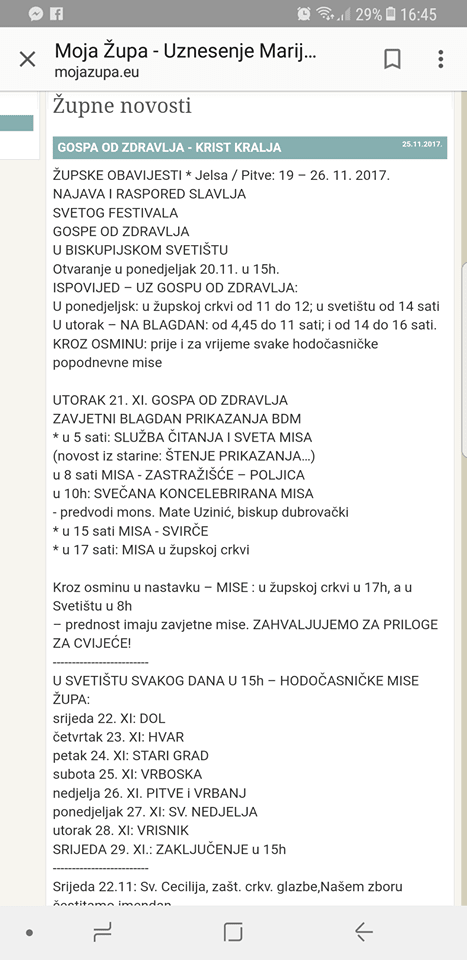
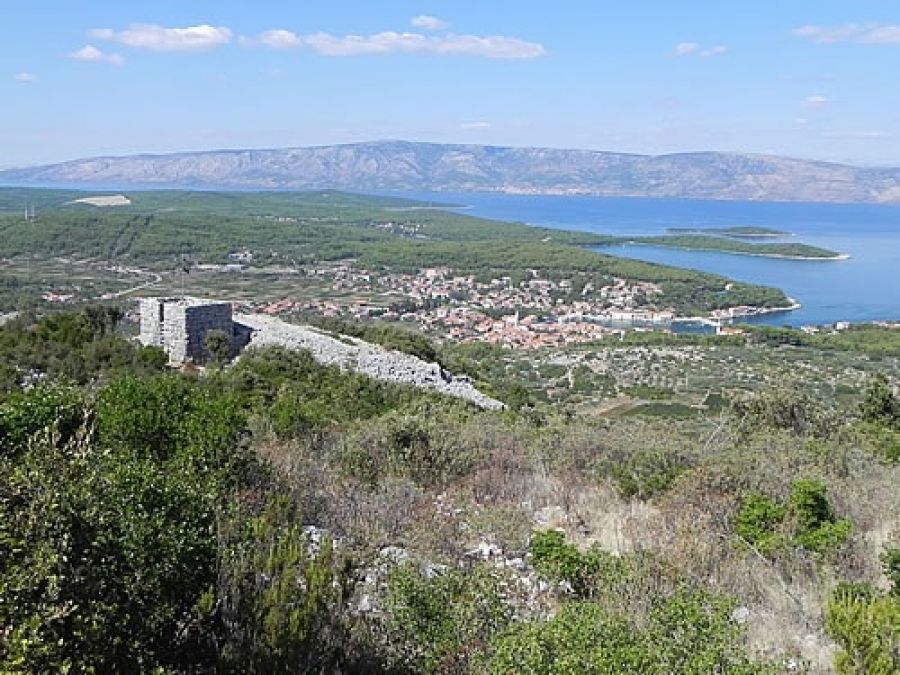
13. 2000 Years of History – Tor and Galesnik
High above Jelsa, take a journey back to civilisations gone by, as explained by Jelsa Heritage:
There are two towers situated on a mountain plateau south of Jelsa: the Greek-Illyrian Tower Tor from the IV ct. BC and the mediaeval town-fortress Galesnik. The Greek Tower of Tor (230 m above sea level) dominates the picturesque valley from Stari Grad to Jelsa up to Vrboska as well as over the channels of Hvar and Split and the Makarska coastline. Around the Tor tower there are ruins of unfinished walls with several natural and man-made terraces, indicating that they had once been living quarters.
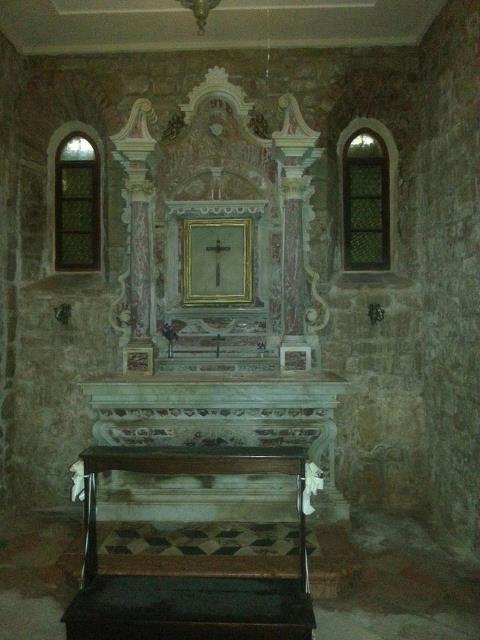
14. Niko Dubokovic
Jelsa’s most famous son is Niko Dubokovic, whose statue adorns the park at the top of the harbour. A man who did much to transform the fortunes of Jelsa, his family home is a true treasure of local and international memorabilia, and it is truly one of the most fascinating properties in all Dalmatia. Located next to Me and Mrs Jones, the house is not open to the public, but I was invited to visit a few years ago. I was stunned with what I found, complete with wonderful garden and a private chapel with a letter of blessing from Pope Pius. Take a tour here.
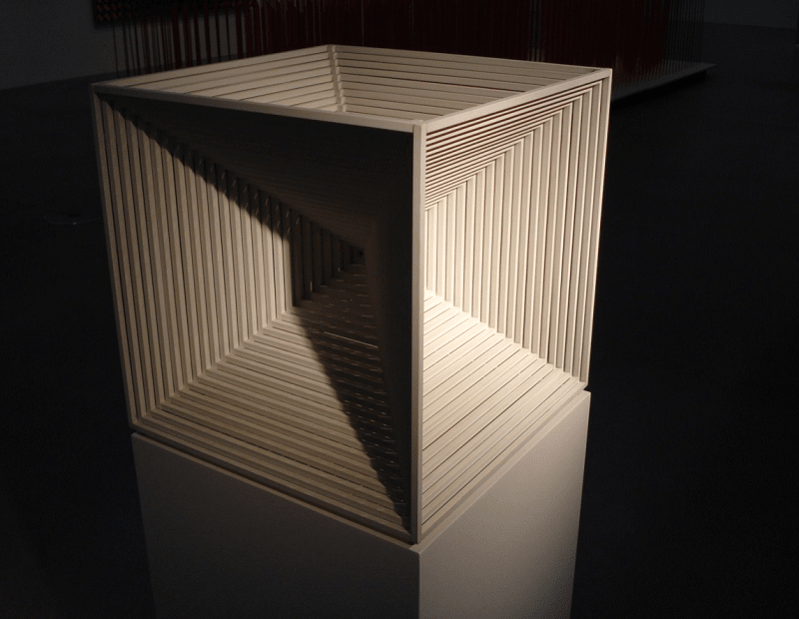
15. Juraj Dobrovic and the Jelsa Museum
With thanks again to Jelsa Heritage:
The museum is made up of several collections at several locations that comprise rich ethnographic and historically artistic materials. Three collections can be visited in Jelsa, one in Vrboska – the Fishing Collection and one in Humac – the Winegrower Collection. The museum space is unique for its content, in the family home of the artist Juraj Dobrović located on St. Ivan Square. Inside the house, which was built at the end of the 19th century and maintains its original ambience. There are exhibits of objects and documents that reveal a middle-class family and social life at the beginning of the 20th century. Additional value with a culturally historical collection in the Dobrović home is provided by a collections of graphics, pictures, and reliefs donated by Juraj Dobrović, which is vividly described by Višnja Zgaga, the director of the Museum Document Center: the chronology and homogeneity of individual cycles are the basic principles of the settings, discreetly suggesting Pythagoras’s heritage, which imbues the work of this artist. The museum is open Monday – Sunday 10:00 a.m. – 12:30 p.m. and 6:30 p.m. – 9:00 p.m.
16. A Town Fit for an Emperor
Jelsa has had many visitors over the years, but surely none more important than Emperor Franz Josef himself, who graced the Dalmatian island with visits to both Stari Grad and Jelsa on May 11, 1875. There was until recently a plaque to commemorate this event onthe spot where he disembarked, but sadly no longer, as it seems to have disappeared with the infrastructure works in the last few years, of which more below.
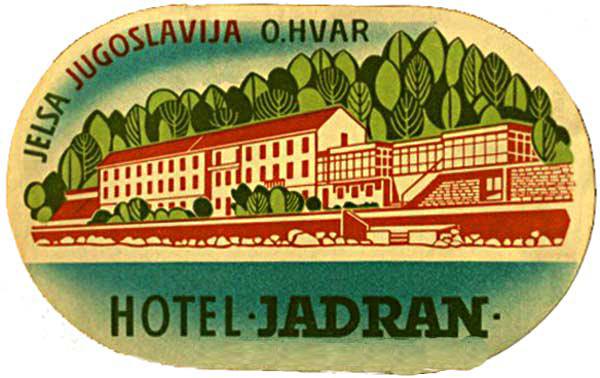
17. 100 Years of Tourism, and More
In an interview with the New York Times this summer, Hvar Town Mayor Riki Novak said that people of Hvar are genetically disposed to tourism. So too in Jelsa, where the tourism tradition is now more than 100 years old. The first hotel in Jelsa opened in 1911. Hotel Jadran suffered (like the rest of the hotels in Jelsa) during the Homeland War, when tourists were replaced with internally displaced persons from other parts of the country. The hotel closed its doors about 10 years ago, and is currenly for sale (and would make a first class boutique hotel).
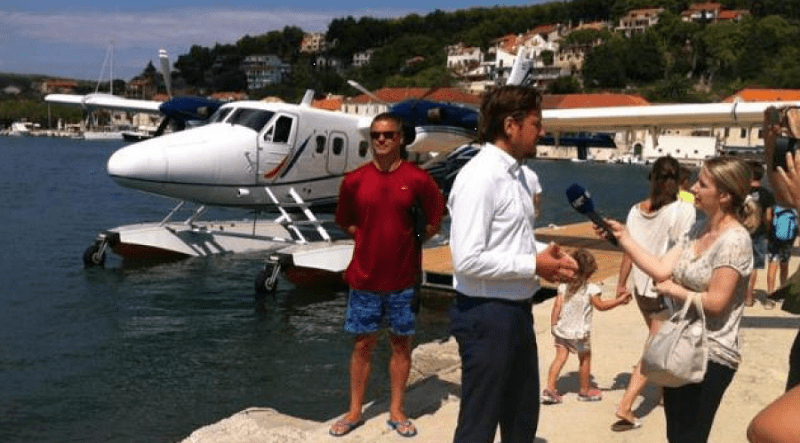
18. Connectivity: A Catamaran and Europe’s First Modern Seaplane Service
Jelsa made modern aviation history on August 27, 2014, when the first scheduled seaplane flight in modern European history landed in the harbour, after a short 15-minute flight from Resnik, near Split Airport. The arrival of European Coastal Airlines promised to be a game changer for island hopping and quick and convenient (and spectacular) travel along the Croatian coast. Various well-documented problems ensured that the project was short-lived, and the company has now filed for pre-bankruptcy. That is not the end of the seaplane story, however, as a new seaplane company is set to fly again from April 2018.
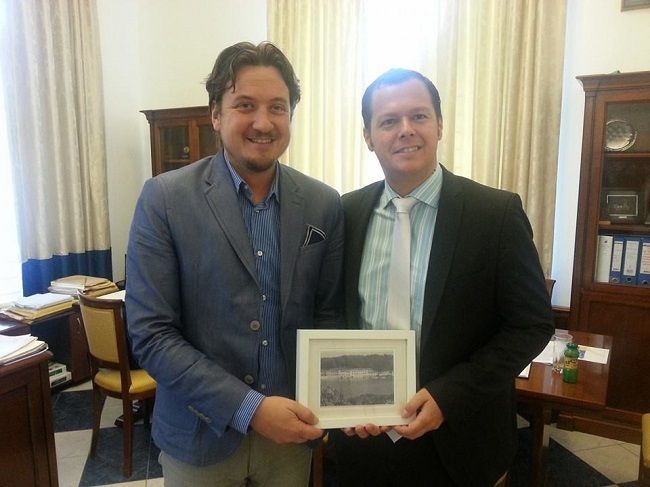
It may have been the first seaplane service in modern European history, but it was not the first seaplane service to Jelsa. Seaplanes also flew in back in the 1930s, and ECA Sales Director, Jan Albers, presented Jelsa Mayor Niksa Peronja with a framed photograph of that slice of Jelsa history at their first meeting.
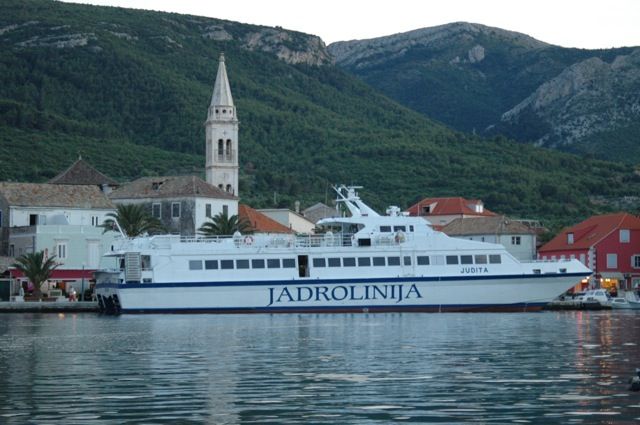
Jelsa does, however, have an excellent connection to the mainland by daily catamaran, leaving each day at 6am (different times on Sundays and Bank Holidays) from Jelsa to Bol on Brac and then Split – the journey takes about 100 minutes, and the return boat leaves at 16:00 (16:30 on Fridays).
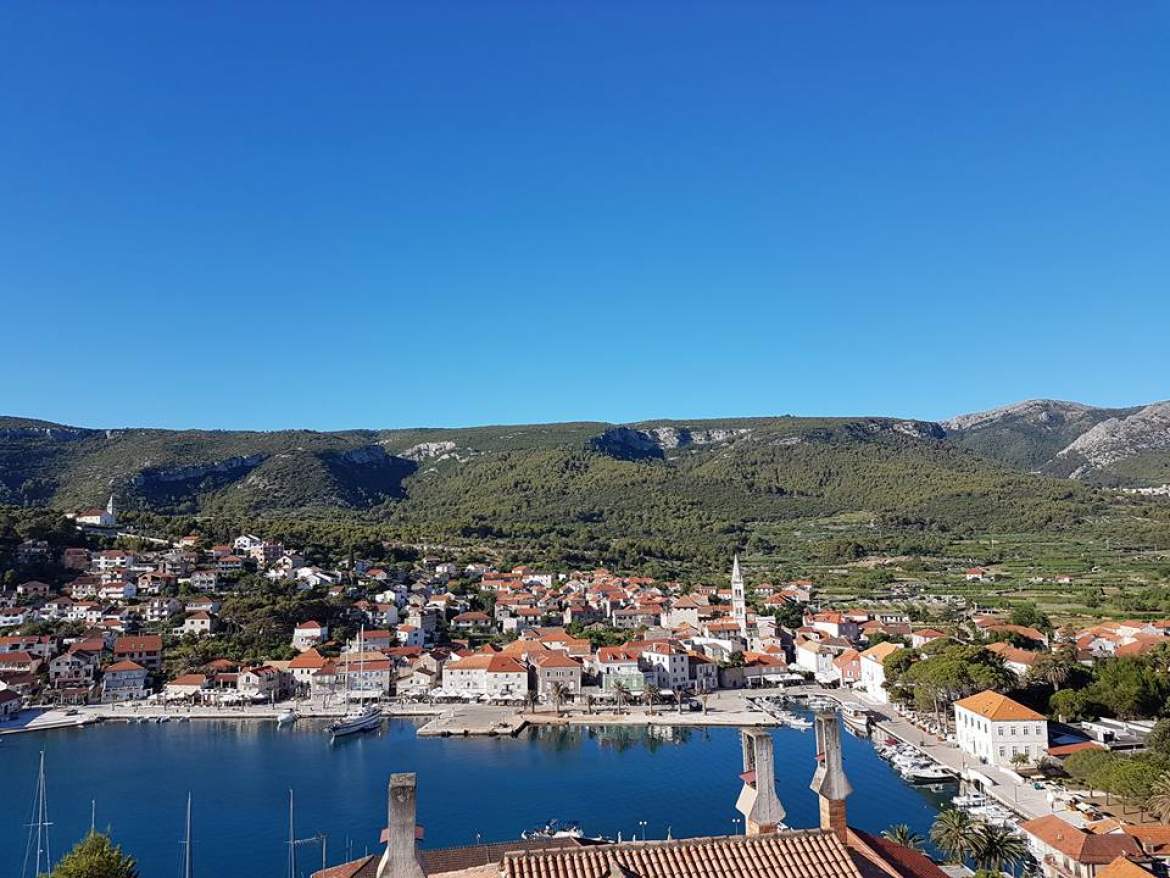
19. All Change in Jelsa – A New-Look Riva
Jelsa has been a huge building zone these last few years. A new stretch of road on the way to Sucuraj, a 10m widening of the main riva and a host of other upgrades and improvements. It has taken time, but the results are already showing, and the new riva in particular has been a huge, with more businesses opening and the tourism offer moving beyond the focus on Pjaca. Here is a video tour of the new-look riva this summer, below.
20. Festa Vina and Vela Gospa – the August Highlights
If you are looking to party, place your visit from August 14 to the end of August, as two of the biggest events of the Jelsa calendar take place. August 15 is Vela Gospa (The Ascension) and a day when families party, visit each other, and businesses serve lunch to their workers (something I experienced at the Tomic winery a few years ago, a very memorable day). The big one, though, is Festa Vina (Jelsa Wine Festival), which is often described as the biggest wine festival on the Adriatic. Traditionally, it has not actually had that much to do with wine (bizarrely), and there are usually an array of attractions, from donkey rides to a waterpolo match to climbing the rope to claim the prsut, even tug of war. In recent years, the focus has been moved more to Jelsa’s wine tradition, with the Hvar Wine Association actively involved. It is quite a party, and it always seems to be the last party of the summer, for Jelsa empties the following day, allowing those who visit to enjoy the peace and tranquillity of one of the best months- September.
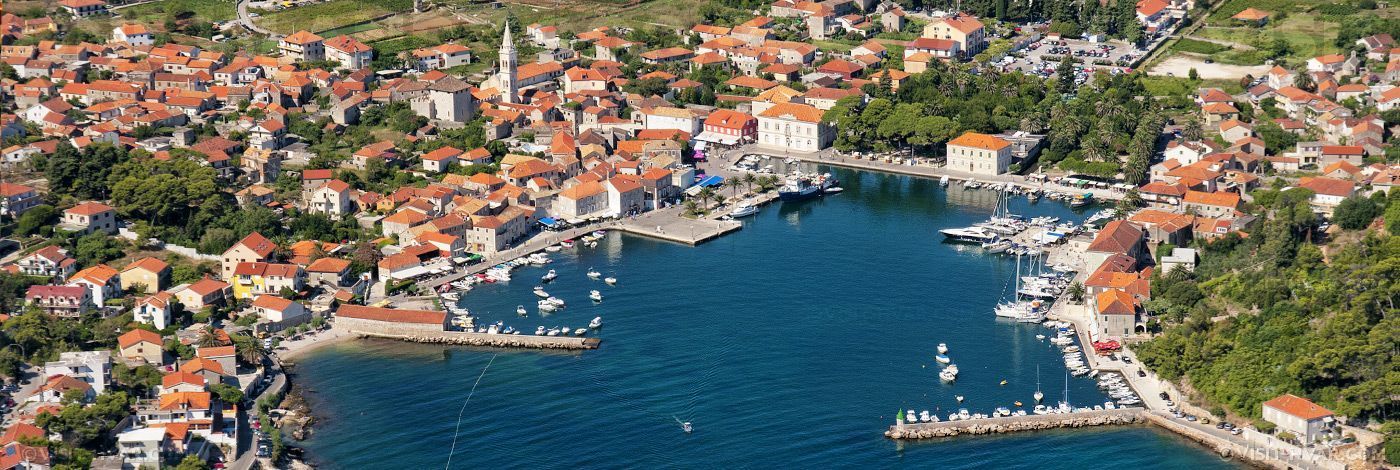
21. The Port of Pitve
Jelsa is first mentioned in the statutes in 1331, and its reason for being was to service a much older community – the village of Pitve up in the hills. Due to the threat of pirates and other nasty seafarers, communities were built away from the sea. Pitve is Hvar’s oldest village, dating back 2000 years, and Jelsa came to be as a port to serve Pitve. They did a great job!
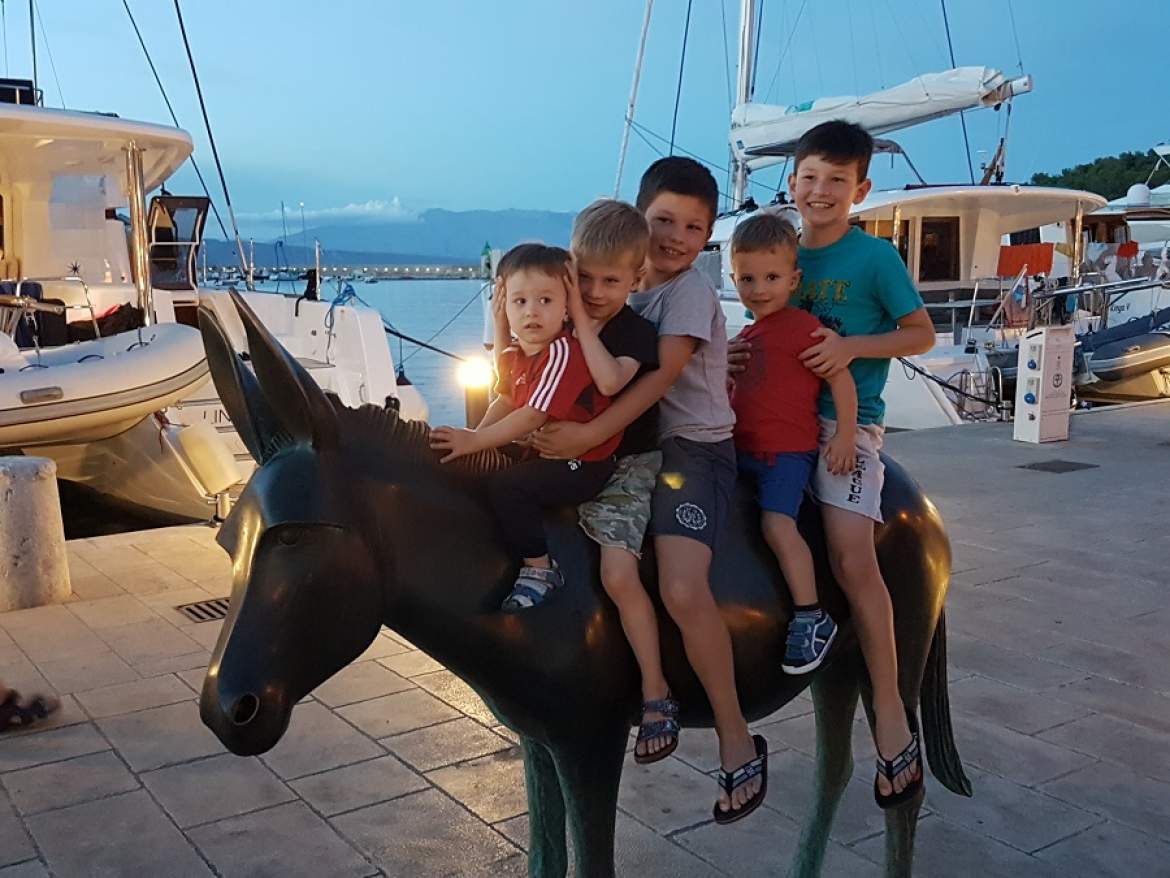
22. A Donkey and a Digger
The donkey has been an important part of life in Dalmatia since time immemorial, and its contribution to life in Jelsa has been recognised with a permanent statue in the middle of the new riva. It has been an absolute tourist hit with locals and tourists,and is now one of the most photographed sights in the town. The donkey may be a worthy memorial to the 19th and 20th century for life in Dalmatia, but if you are looking for a Jelsa symbol for the 21st century, look no further…
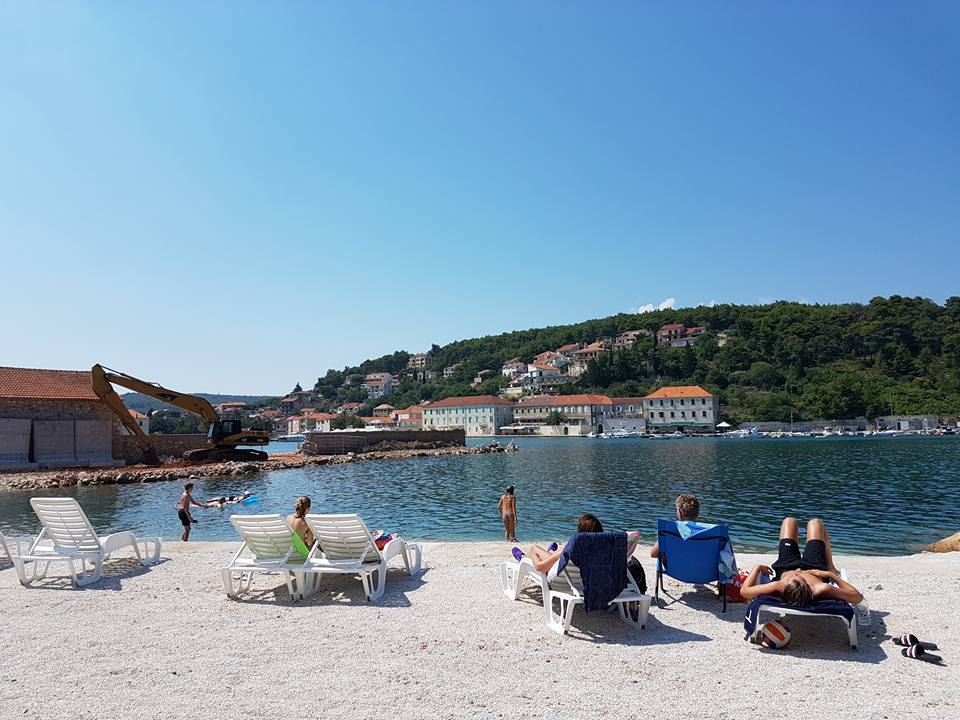
Such was the level of construction in Jelsa in recent times, that it seemed at times that there were more diggers than tourists, and while the diggers were removed for the season and the works broadly stopped, not every one got away. One little digger fell into the sea one day (nobody hurt) and it spent some time as an unlikely attraction just off the new Copacabana beach. With most of the works now finished, let’s hope the donkey outlasts the digger.
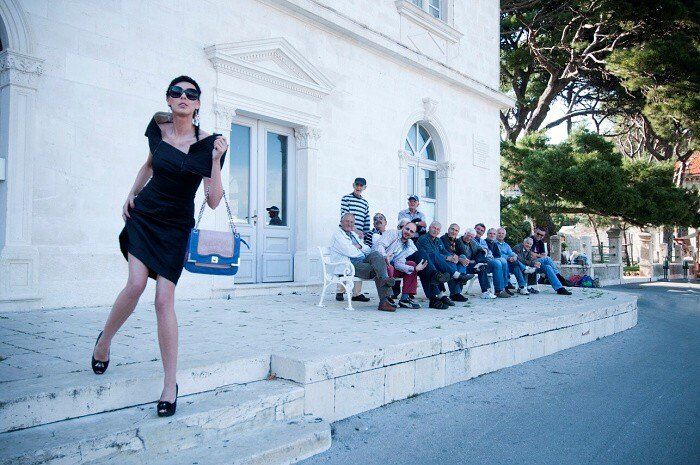
23. Dalmatia’s First Faculty of Philosophy: The Bench
It is a little-known fact that the first university in all Croatia was founded in Jelsa. It was so long ago that nobody quite remembers the date, and it is also a very unusual university in that it has only one faculty – philosophy – and no students, just an abundance of wise professors. I refer, of course, to Jelsa’s latest tourism hit, The Bench. A bastion of Dalmatian life, the male village elders regularly convene to discuss the weighty topics of the moment with great solemnity – olives, variations in blitva preparation, the wind and other such topics. It is a decidedly local and male bastion, and one has to earn the right of invititation.
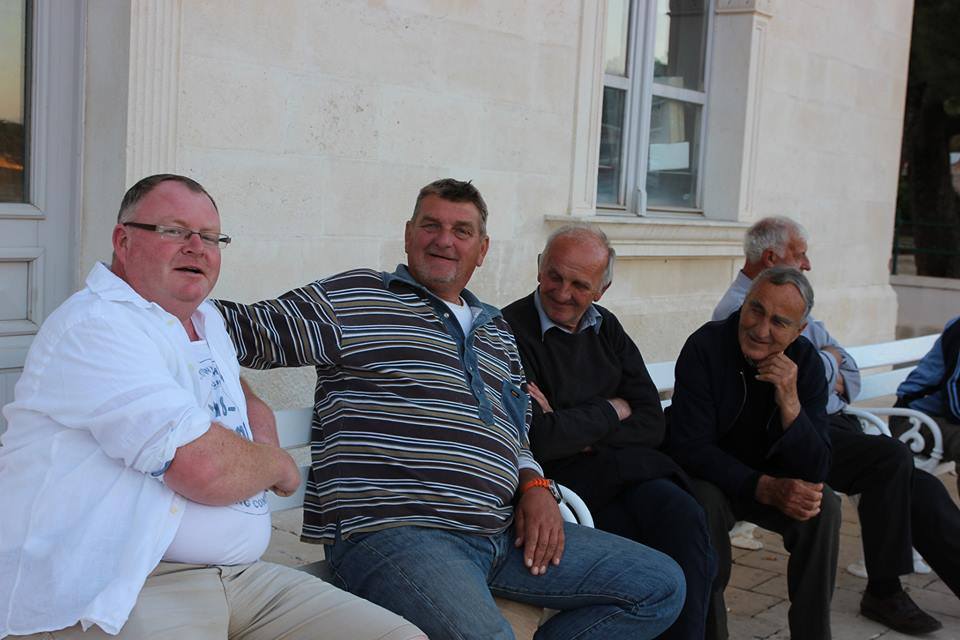
And I genuinely regard it as one of the highlights of my life when – after just 13 years – I was invited to sit on The Bench. Thanks Jakov!
Since I blogged about my mild bench fixation, other visitors have been taking selfies on the famous Jelsa bench, and a band from California even jetted in to play the first live gig from The Bench, see below.
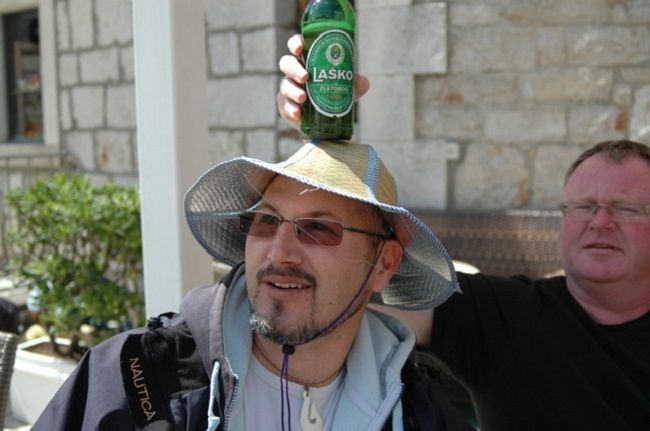
(Photo credit Vivian Grisogono)
24. The Easiest Language in the World: Jelsa Dialect
Jelsa has its own modern-day icons, none more so than The Professor, aka Frank John Dubokovich, Guardian of the Hvar Dialects, who took YouTube by storm a few years ago, with a language lesson series on the quirks of Hvar dialect. None was more epic, or popular than his first – the legendary Dalmatian Grunt, which has been viewed almost 35,000 times. Check it out below – is Hvar dialect not the easiest language in the world?
https://www.youtube.com/watch?v=lYjTriY3Y0A
The Professor’s fame spread quickly, as he continued to share his linguistic colossus with his growing army of (mostly young female) fans. National television came calling, and he starred on the Susur Jelsa programme on prime-time television. And then it happened…
British television got in touch, and The Professor headed to the mainland to give some reality television contestants the television language lesson of all time. Epic television – proud of you, Professor.
The Professor’s global appeal is perhaps best symbolised by this video, as Socceroos deputy football coach, Ante Milicic, jetted in from Sydney to meet The Professor, and revealed on camera (video above) that not only does he have The Professor’s voice as his ring tone, but also his morning alarm clock…
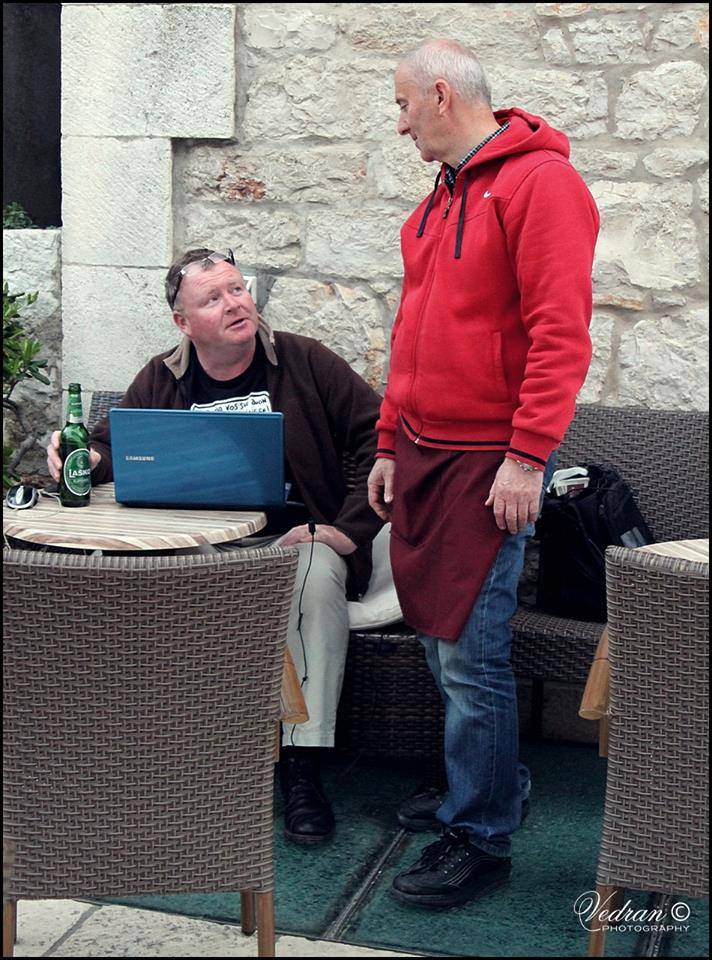
(Photo Vedran Segvic)
25. The Birthplace of the Total Croatia Project
And, of course, Jelsa is the place with the Total Croatia project began, with a small website called Total Hvar in October 2011. Life was simpler back then at The Office, aka Cafe Splendid on the main square. Just me, my laptop and Captain Nijaz with the Lasko refills. Life has moved on since then, but a very special part of TCN in a very special town.
To learn more about Jelsa, visit the official Jelsa Tourist Board website.


